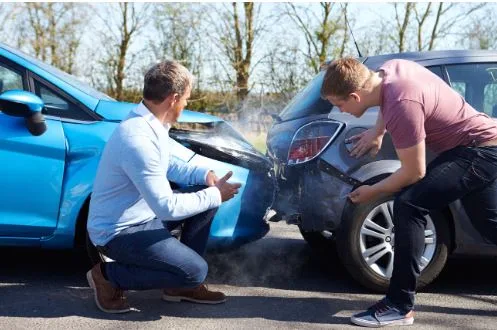Why traditional vehicle inspection methods are becoming obsolete
Vehicle damage inspection processes today look remarkably similar to methods used thirty years ago. An inspector walks around a vehicle with clipboard in hand, documenting scratches, dents, and mechanical issues through visual examination. Companies that continue relying on outdated approaches find themselves at increasing disadvantages compared to organizations that have embraced more efficient alternatives.
Major Issues with Manual Inspection Processes
Human Assessment Variability
Manual inspections suffer from inherent inconsistency in how different people evaluate vehicle conditions. Two experienced inspectors examining the same damage can reach many different conclusions regarding severity, repair requirements, or overall vehicle condition. This variability comes from differences in the training background, experience levels, personal judgment, and even subjective factors like the mood or extreme fatigue.
Resource and Scheduling Constraints
Manual inspection operations require a lot of coordination between multiple parties and various factors. Inspector availability must come in line with customer schedules, vehicle locations, weather conditions, and facility access. Maintaining qualified inspectors in various locations requires substantial investment in personnel, training, equipment, and supervision.
How Customer Expectations Have Changed
Modern customers bring different service expectations shaped by their experiences with technology companies and digital-first businesses. These evolving standards create growing dissatisfaction with traditional inspection methods that cannot match the speed, convenience, and transparency customers now consider normal.
Speed and Immediacy Demands
Contemporary customers expect services to be completed very fast with very less waiting periods. The concept of scheduling inspection appointments days in advance and waiting additional time for results feels outdated compared to other business processes that provide immediate feedback and resolution. Real-time updates and instant access to results have become baseline expectations rather than premium features.
Self-service capabilities appeal to customers who prefer controlling their own experiences rather than depending on service provider schedules. Many individuals would rather handle routine assessments themselves using mobile technology than coordinate appointments with inspectors for straightforward evaluations.
Transparency and Documentation Requirements
Customers demand comprehensive documentation of inspection results with detailed explanations of findings and assessment criteria. They expect high-quality visual evidence that shows and illustrates us clearly with any issues identified and supports repair recommendations or damage evaluations. Access to complete inspection records and the ability to review detailed findings online have become standard requirements.
Digital-First Service Preferences
The widespread reach of mobile technology has changed the whole aspect of customer preferences for service interaction. Customers increasingly expect to initiate requests, track progress, and access results through smartphone applications that provide seamless experiences across different devices and platforms.
Technology Alternatives Reshaping the Industry
Artificial Intelligence and Machine Learning
Modern AI systems analyze vehicle photographs to help to identify damage, assess severity levels, and estimate repair costs with accuracy that often go way beyond human performance. These systems process visual information consistently without the variability that affects human assessors, and they can evaluate multiple vehicles simultaneously without fatigue or distraction.
Machine learning capabilities enable continuous improvement as systems process increasing volumes of data. Each inspection gives us the collective knowledge base, helping AI systems become more accurate and capable over time. Pattern recognition allows AI systems to identify subtle damage indicators that human inspectors might miss or inconsistently detect.
Mobile Technology Integration
Current smartphone capabilities enable professional-quality documentation suitable for detailed analysis. High-resolution cameras, GPS integration, and powerful processors allow users to capture detailed vehicle assessments without specialized equipment or extensive technical training.
Metadata capture including timestamps, location data, and device information provides additional verification and security that shows and supports inspection accuracy and dispute resolution.
Automated Processing and System Integration
Advanced systems process inspection data immediately and integrate the results with the existing business systems without any need of manual intervention. This automation removes the data entry errors, reduces processing time, and makes it possible to give real-time updates to customers and other stakeholders.
Economic Factors Driving the Shift
Labor Cost Pressures
Personnel expenses for manual inspection operations continue escalating faster than revenue growth in most markets. Total employment costs include not only salaries but also benefits, training, equipment, supervision, and overhead expenses that can double apparent labor costs.
Geographic coverage requirements multiply personnel expenses as organizations need qualified staff distributed across service territories.
Scalability and Flexibility Issues
Traditional inspection methods scale poorly with business expansion or demand fluctuations. Adding capacity requires hiring, training, and equipping additional staff—a process that involves substantial upfront investment and months of preparation before new resources become fully productive.
Seasonal demand variations create particular economic challenges as organizations must choose between maintaining excess capacity during slow periods or accepting service delays during peak demand.
Competitive Market Pressures
Organizations using automated inspection technologies gain a lot of competitive advantages in service speed, pricing flexibility, and customer experience quality. Early technology helps to often establish market leadership positions that become difficult for traditional operators to challenge. Customer migration toward providers offering superior service experiences make it a faster process for the decline of traditional methods.
Future Industry Direction
The trajectory toward technology-driven inspection methods appears irreversible as AI capabilities continue advancing and customer expectations evolve toward digital-first service delivery.
Platform Integration Development
Automated inspection systems will increasingly integrate with broader digital ecosystems that manage entire vehicle lifecycles. These platforms will connect inspection data with insurance, financing, maintenance, and resale services to provide detailed vehicle ownership support. Real-time monitoring capabilities will substitute periodic inspection snapshots with continuous condition assessment.
Industry-Wide Transformation
The pace of adoption will make it quick as competitive pressures intensify and customer expectations solidify around digital-first service delivery. Traditional methods will likely survive only in specialized applications where human expertise remains essential or regulatory requirements mandate manual inspection. Workforce transformation will shift focus from manual assessment toward system management, exception handling, and customer consultation.
Conclusion
Traditional vehicle inspection methods are becoming obsolete because they cannot meet the evolving demands of modern business operations and customer expectations.
The fundamental limitations of manual processes—inconsistency, inefficiency, high costs, and poor scalability—have become increasingly problematic as superior technological alternatives become widely available and competitively necessary.
Economic pressures and competitive dynamics make this transformation inevitable rather than optional.





